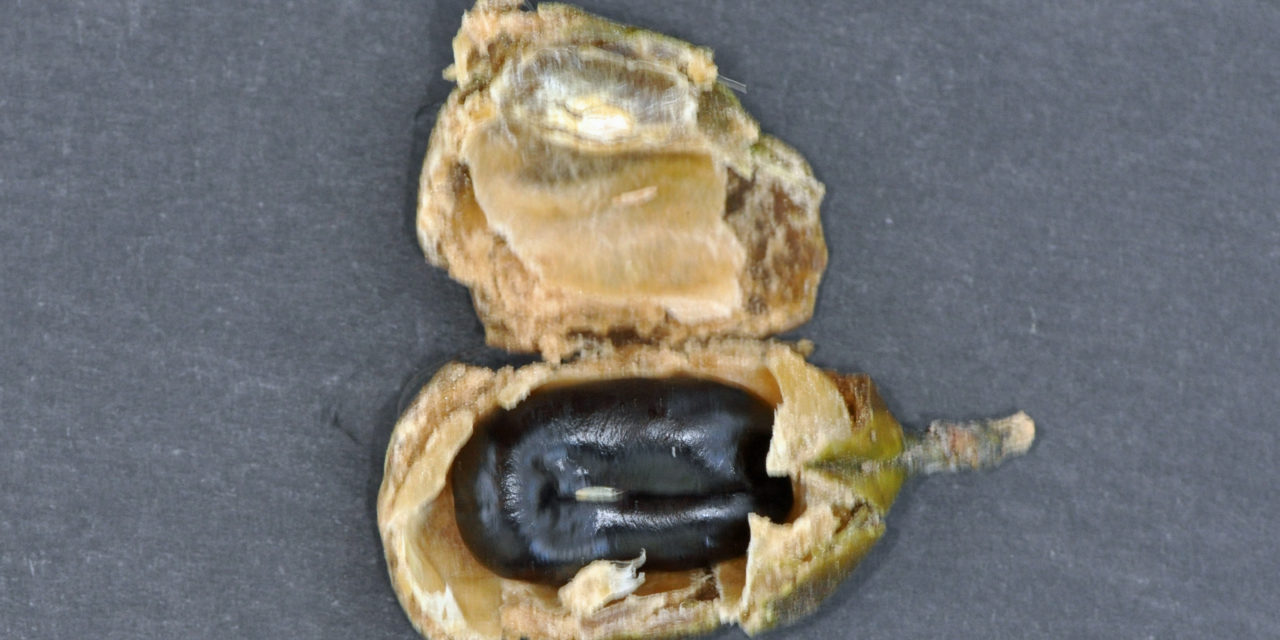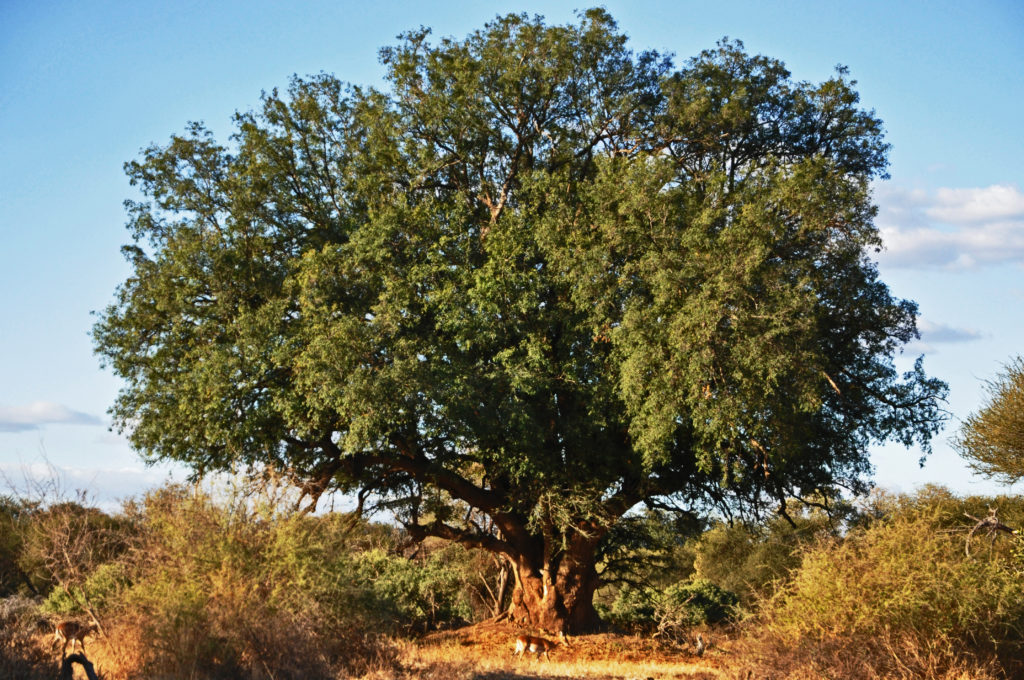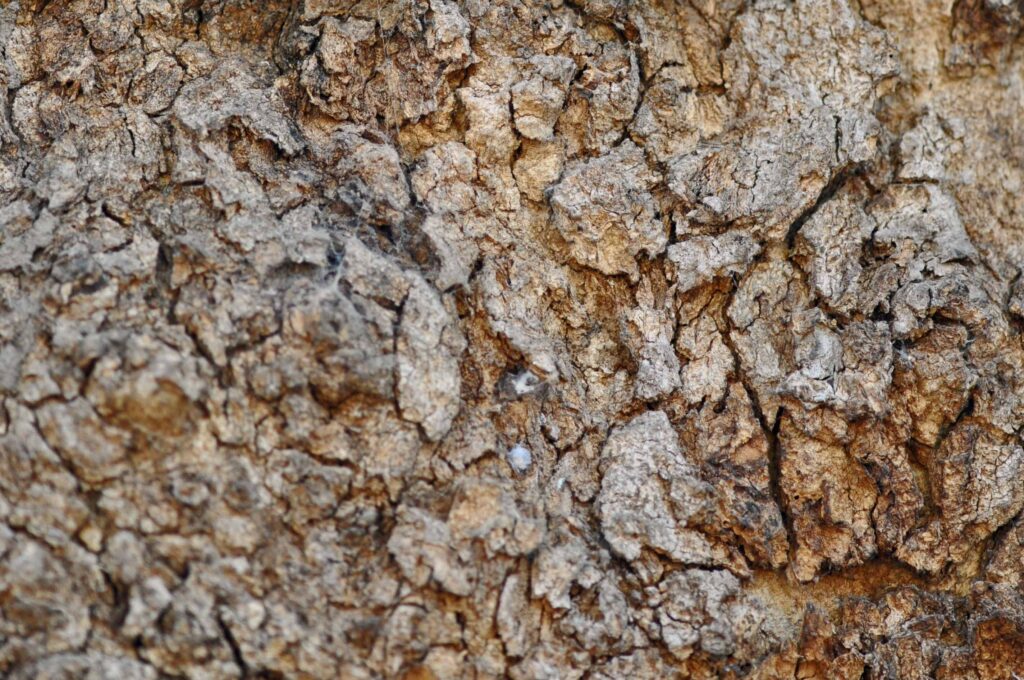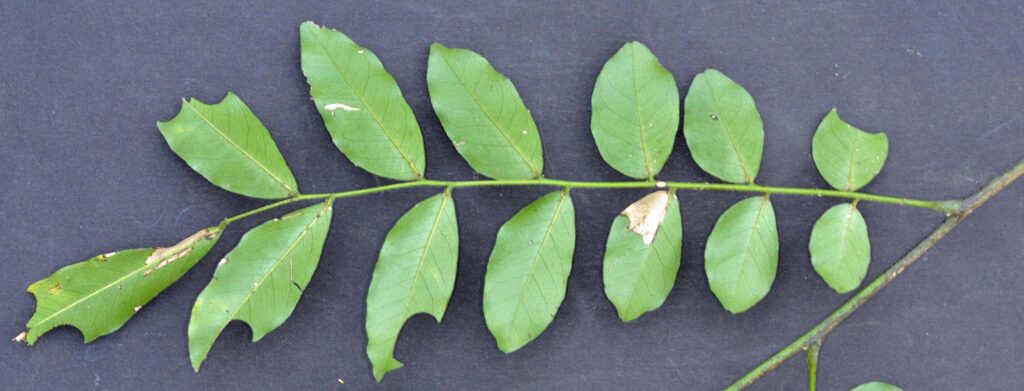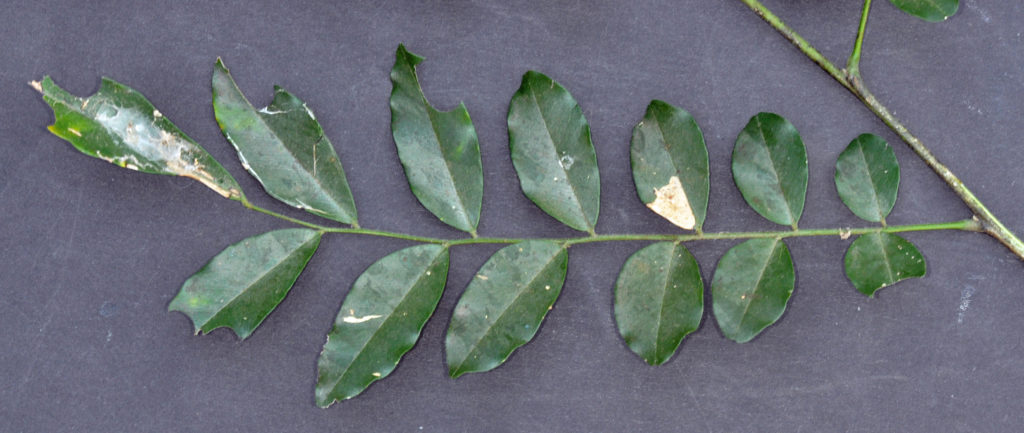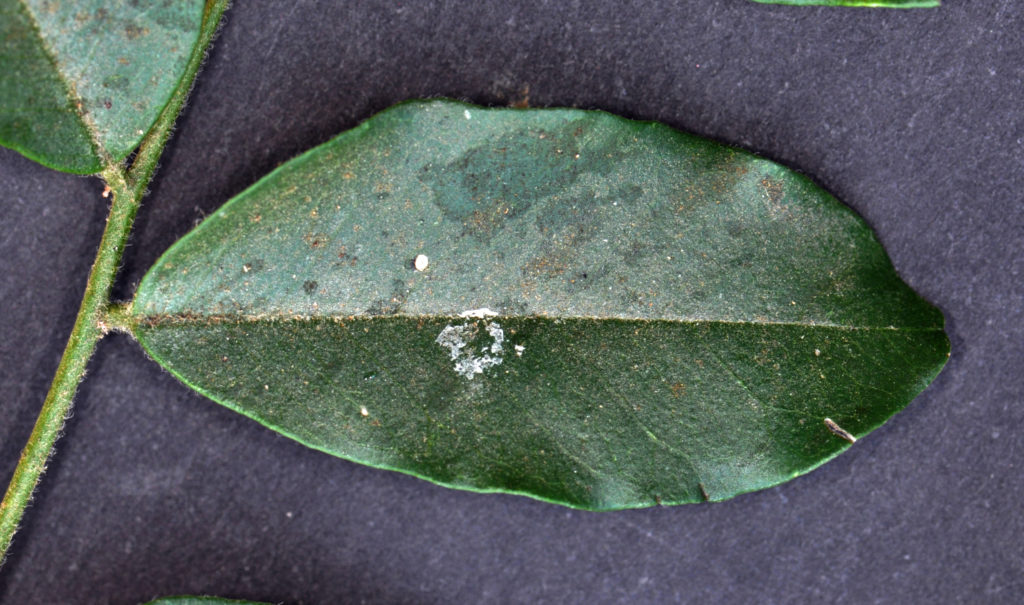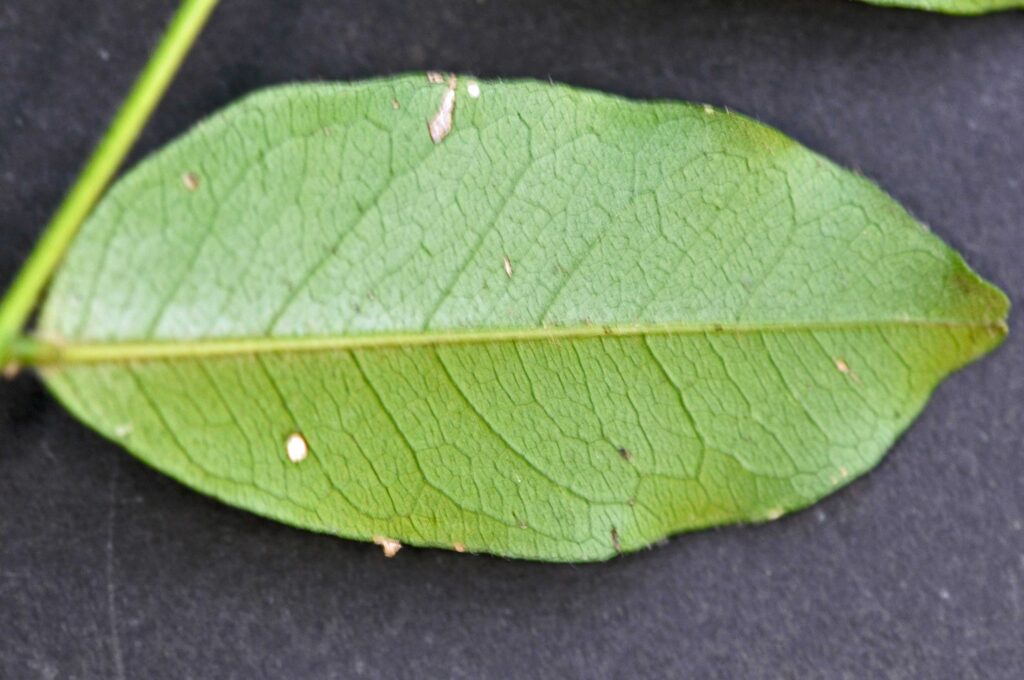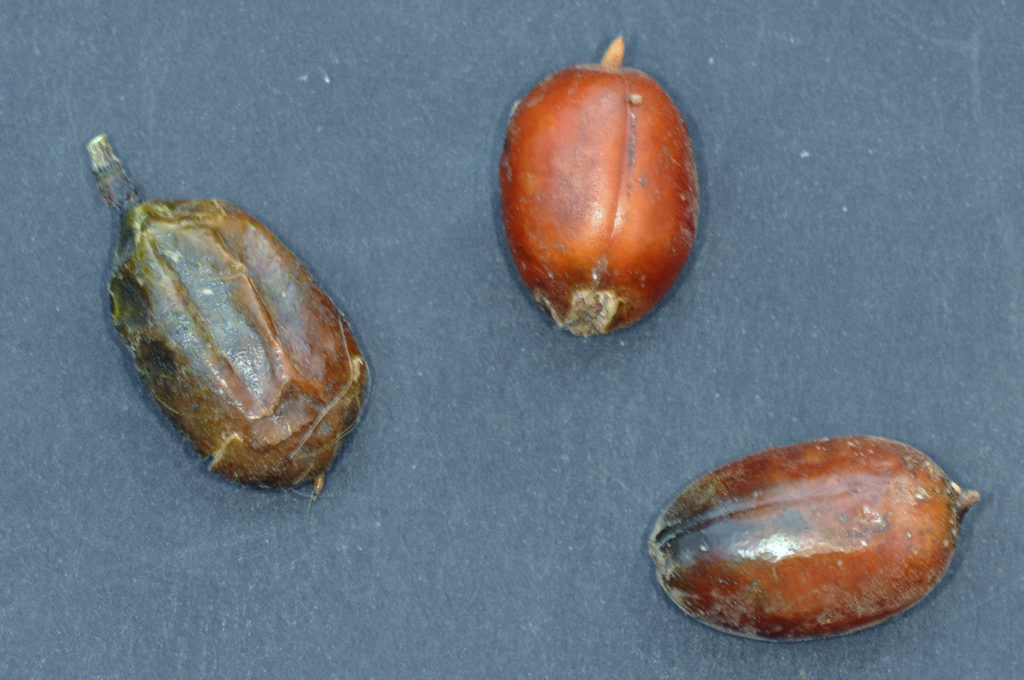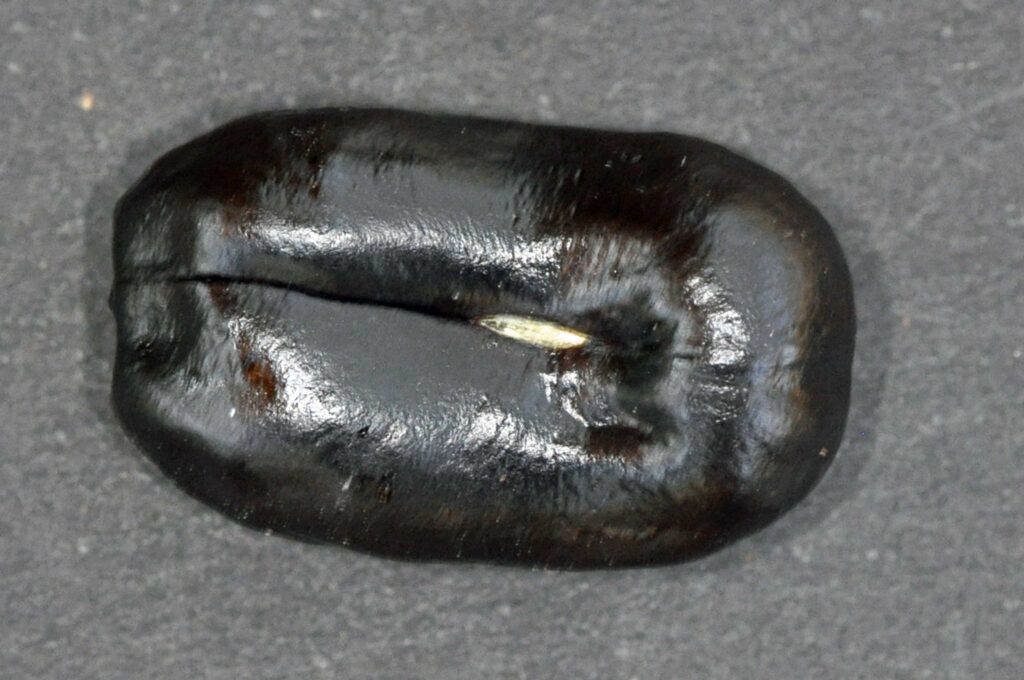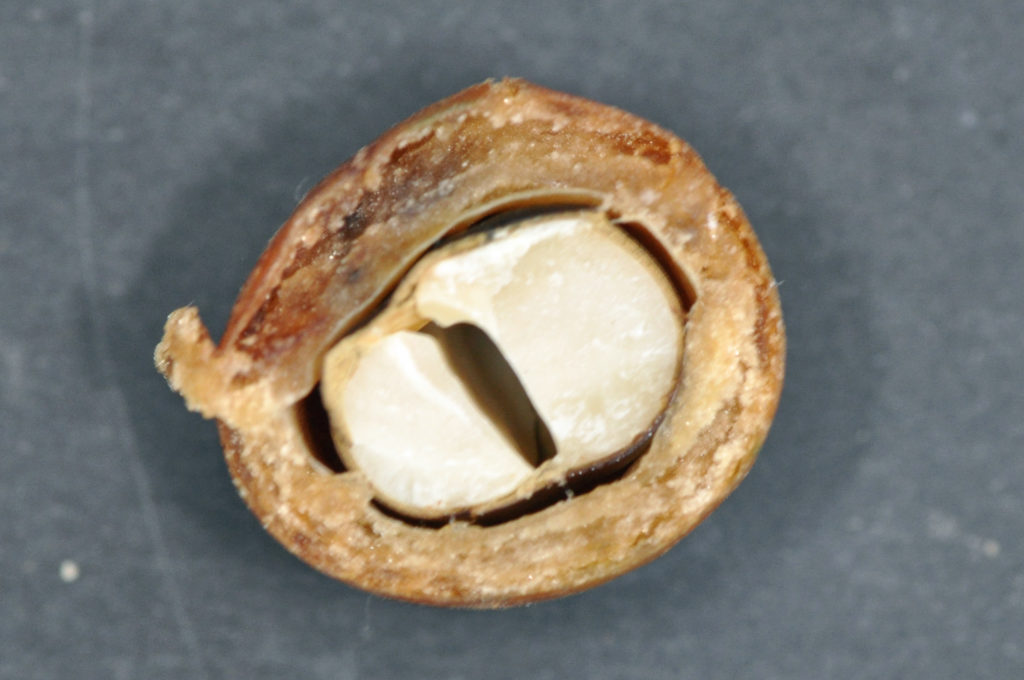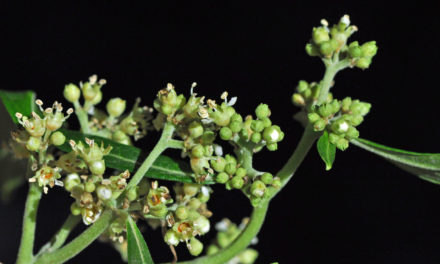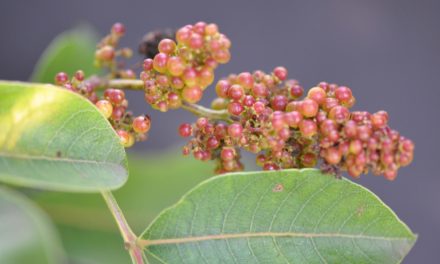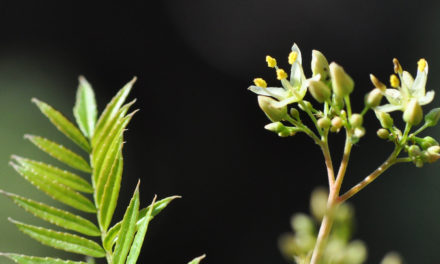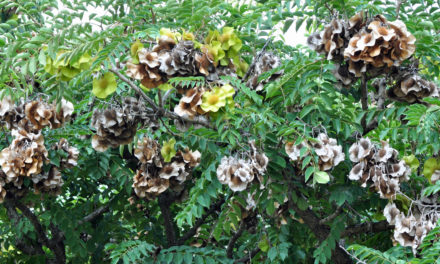Xanthocercis zambesiaca
General Info – summary
This magnificent frost sensitive evergreen & wide spreading Tree has a roundish canopy & may reach 18m+ high & wide. It usually has several combined trunks. Imparipinnate Leaves have leaflets with entire margins & asymmetric bases. Creamy-white, bisexual, zygomorphic Flowers in axillary racemes & have superior ovaries & short styles. Fruit is reddish brown and drupe-like with a single shiny black seed.
Description
Previous Names: Pseudocadia zambesiaca, Sophora zambesiaca.
SA Tree No. 241.
Common names: (Afr) Hoenderspoor, Njalaboom. (Eng) Nyala-tree, Nyala Tree. (Setswana) Mhota, Moladi, Motlha. (siSwati) umihlwati, Umhlwati. (Tshivenda) Mutshato. (Xitsonga) Nhlahu.
Family: Fabaceae, or Leguminosae (Pea, bean or legume family). After the Orchidaceae and the Asteraceae, the Fabaceae is the third largest Angiosperm (flowering plants) family with 700+ genera and close to 20 000 species. Local Tree genera on this website include Acacia (Vauchellia, Senegalia), Albizia, Bauhinia, Bolusanthus, Burkea, Calpurnia, Colophospermum, Cordyla, Cyclopia, Dichrostachys, Erythrina, Erythrophleum, Faidherbia, Indigofera, Mundulea, Peltophorum, Philenoptera, Piliostigma, Schotia and Xanthocercis. The Fabaceae are recognisable by their fruit and their pinnately compound Leaves. Leaves may also be simple – even bilobed and usually have stipules – some of which may be spinescent. Leaflets are usually entire. Flowers are bisexual and bracteate. Regular flowers usually have 4-5 sepals and the same number of petals. Irregular flowers have 4-5 sepals and 5 or less petals. Stamens have anthers that have 2 pollen sacs and there are usually at least twice the number of stamens as petals – often 10. The superior Ovary has 1 locule containing 1 or more ovules. The Stigma and Style are simple. The single carpel develops into the Fruit, which is usually a pod. The mature pods may dehisce or break into segments. Seeds vary.
Name derivation: Xanthocercis – Xantho: yellow, cercis: from the genus Cercis. (a non indigenous member of the Fabacee. zambesiaca of the Zambezi region.
Conservation: National Status: L C (Least Concern). Assessed: 2005 (W. Foden and L. Potter).
Tree
The roundish canopy on this impressive Tree (photo 431) helps may occasionally reach up to 20+m high and are as wide or wider than high (photo 431). The much-fluted Trunk is stout and may initially contain the combination of several vertical Branches that may increasing the trunk “diameter” to about 2m or more. Upper branches are slender and tend to droop at the ends. Young twigs are pale yellowy brown, covered with short soft hair, and have a slightly zigzagging growth pattern. Other branches are long and slender and tend to hang down – especially towards the ends. Present on older branches are indistinct Lenticels (usually raised corky elongated areas on the plant that allows the uncontrolled interchange of gases with the environment). The dark grey to brown, non-pealing Bark becomes fluted, rough and cracked into small pieces (photo 35).
- 431. 2014/09/09. Mapungubwe NP. Photo: David Becking.
- 35. 2014/08/31. Mapungubwe NP. Photo: David Becking.
Leaves
The Leaves on this evergreen tree tend to droop and are imparipinnate (pinnately compound leaf ending in a single leaflet – photos 36 & 37). The hairy leaf Petiole (leaf stalk) has a basal swelling (photo 36). Here the Rachis (main leaf axis) is hairy (photo 38). Each leaf has 3 to 7 pairs of nearly opposite or alternate Leaflets, plus the largest terminal leaflet, which may reach 7 x 4cm. Each oval or oblong leaflet Blade is a dark shiny green above and much lighter below (photos 38 & 39) and here the venation (pattern of veins within the leaf blade) is much more visible (photo 39). The leaflet lateral veins do not go directly to the margin. The leaflet Margin is entire (with a continuous margin, not in any way indented) and the leaflet Apex is usually notched (photo 39) or rounded and the Base is rounded to broadly tapering and asymmetric (not equal to the opposite side – photo 39. The leaflet Midrib protrudes below (photo 39) and is usually grooved above (photo 38). The Petiolules (stalks of leaflets) are short and hairy (photo 38). Stipules (basal appendage of the petiole) are small.
- 36 2014/08/31 Mapungubwe NP. Photo: David Becking.
- 37. 2014/08/31. Mapungubwe NP. Photo: David Becking.
- 38. 2014/08/31 Mapungubwe NP. Photo: David Becking.
- 39. 2014/08/31 Mapungubwe NP. Photo: David Becking.
Flowers
The mauve-white hanging sprays of pea-like Flowers are up to 10cm long. They are rose scented and occur in terminal or axillary Racemes (a simple elongated inflorescence with stalked flowers that open in succession towards the apex). Individual bisexual flowers are zygomorphic (irregular flower: when corolla is divisible into 2 equal halves in one plane only). These flowers only have a slight resemblance to those of a sweet pea. Bracts (a much-reduced specialised leaf, particularly the small scale like leaves in a flower cluster or associated with flowers) are present and are caducous (an organ or part which is easily detached and shed early). The greyish velvety Calyx has a bell-shaped tube with short lobes. The Corolla has 5 unequal white or creamy yellow Petals, which arise from the base of the calyx tube. The upper hairy Vexillum or standard petal is outermost and only slightly larger than the other petals. The remaining 4 petals are similar. Unlike the pea-type flower, there are no joined keel petals. The 10 Stamens arise with the petals. Nine of them are joined and the tenth one, adjacent to the vexillum, is free. The Anthers are oblong. An annular Disc (a more or less fleshy or elevated development of the receptacle) is present. There is a single Pistil (a unit of the Gynoecium, the female element of the flower, composed of the Ovary, Style and Stigma) containing a superior Ovary on a short stalk. The short Style ends in a lateral Stigma. (Sep-Dec).
Fruit
Unlike most members of the Fabaceae, the stalked Fruit is not in a pod. It is plumb-shaped, reddish brown and Drupe-like. It resembles a berry (photo 40) and is up to 2,5 x 1,7cm. Initially a flowery, fleshy pulp encloses the usually single Seed, which has a shiny-black Testa (seed coat – photo 42). Photo 44 shows a cross section of the ripened fruit revealing the 2 white cotyledons (seed leaves; primary leaves of the embryo). (Nov-Jun).
- 40. 2014/08/31. Mapungubwe. Photo: David Becking.
- 42. 2014/08/31. Mapungubwe. Photo: David Becking.
- 44. 2014/08/31. Mapungubwe. Photo: David Becking.
Distribution & Ecology
In South Africa, these Trees are located in Limpopo (between the Soutpansberg and the Limpopo River). Attractive specimens are present at Chipise (close to Messina and the Zimbabwe border. They also occur in Mpumalanga (Northern part of the Kruger National Park especially near Pafuri). Insects are responsible for pollination. This plant is a southern Africa endemic (restricted to a particular geographic location). Beyond South Africa, the plant grows in Mozambique, Eswatini (Swaziland), Zimbabwe, Botswana and Zambia. These trees are commonly found in hot deep sandy areas along rivers in the lowveld (land areas that lie at an elevation of between 150 and 600 metres. Leaf feeders include Elephants, Giraffe and Nyala. The Fruit attracts birds including Green Pigeons, Brown-headed parrots, Grey and Yellow-billed Hornbills and Brown-headed Parrots. Baboons and monkeys also feed on the fruit. Bushbuck, impala and guineafowl consume fallen fruit – often dropped by the feeding birds. The ripe young seedlings often grow below the parent plant. In the hot summers, this is a sought-after tree for its impressive dense shade. Seeds germinate easily. Plants, including the slow growing seedlings are frost and drought sensitive. They grow best in soils, usually up to 75m from rivers. They also are associated with termite mounds.
Ethnobotany
The Seeds are eaten fresh. If unripe they may be wrapped in a hide and buried for a few weeks before being made into porridge. The seeds may also be dried and crushed into a coarse meal. The dense white, fine textured Wood is hard and finishes with a smooth appearance. The wood is used as fuel. Sawdust is irritating to the eyes, nose and throat. Crushed Leaves have an unpleasant smell. In the right environment, this tree provides good, dependable shade and is ideal for large gardens.
References
Coates Palgrave, M. 2002. Keith Coates Palgrave Trees of Southern Africa, edn 3. Struik, Cape Town.
Burrows, J.E., Burrows, S.M., Lotter, M.C. & Schmidt, E. 2018. Trees and Shrubs Mozambique. Publishing Print Matters (Pty) Ltd. Noordhoek, Cape Town.
Foden, W. & Potter, L. 2005. Xanthocercis zambesiaca (Baker) Dumaz-le-Grand. National Assessment: Red List of South African Plants version . Accessed on 2025/03/20.
Ginn P.J. Mcilleron W.G. and Milstein P. le S, 1989. The Complete Book of Southern African Birds. Struik, Cape Town.
Lawrence, G. H. M, 1951. Taxonomy of Vascular Plants. The Macmillan Company, New York. Tenth Printing 1965.
Palmer, E. & Pitman, N. 1972. Trees of southern Africa. Balkema, Amsterdam, Cape Town.
Schmidt, S. Lotter, M. & McCleland, W. 2002. Trees and Shrubs of Mpumalanga and the Kruger National Park. Jacana, Johannesburg.
van Wyk, B. & van Wyk, P. 1997 Field guide to Trees of Southern Africa. Struik, Cape Town.
https://en.wikipedia.org/wiki/Xanthocercis_zambesiaca
http://www.zimbabweflora.co.zw/speciesdata/species.php?species_id=131230
http://tropical.theferns.info/viewtropical.php?id=Xanthocercis+zambesiaca
http://mozambiqueflora.com/speciesdata/species.php?species_id=131230
http://posa.sanbi.org/flora/browse.php?src=SP
http://pza.sanbi.org/xanthocercis-zambesiaca

